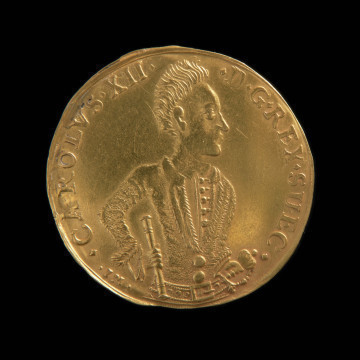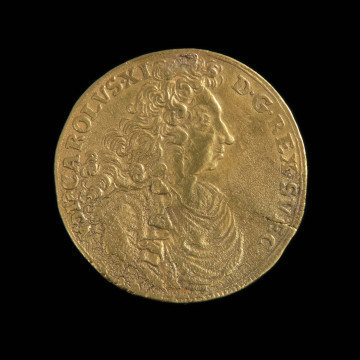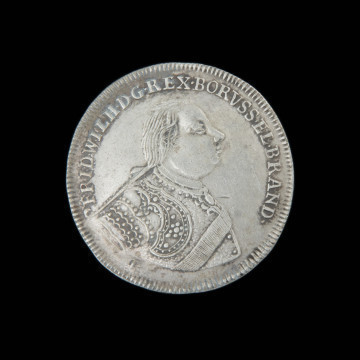
Commemorative double-ducat
1706
National Museum in Szczecin
Part of the collection: Pomeranian coins
The outbreak of the Third Northern War and the need to pay the army of the Swedish King Charles XII (1697-1718) contributed to the resumption of minting in Szczecin in 1705. The provincial government allowed the mint to be run by the mint master Jan Memmies, counting on cheap purchases of precious metals. Contrary to his hopes, the activity did not bring profits, and in 1709 the mint was closed. It was the last accent of Swedish coinage in Szczecin. In 1713, the city was occupied by the Prussian army. The war and the King's military power brought the Protestants hope for regaining their religious rights, taken away from them after the Thirty Years' War. At Altranstädt, in 1706, Charles XII concluded an agreement with Emperor Joseph I of Habsburg by which Protestants regained their churches and could build new ones (the so-called 'Churches of Grace'). The imperial grace required many diplomatic efforts and cost the Silesian Protestants 700,000 guilders. An additional agreement confirmed the treaty concluded in Wrocław in 1709. Thalers glorifying the King as the protector of Protestants in Silesia and emphasising the peaceful aspect of these actions were minted in Szczecin to commemorate those events. On the main side, we see a standard image of the King. The face is rendered with remarkable realism, the hair is dishevelled (the King did not wear a wig), and his head is uncovered, according to the Roman pattern. Under the bust, there is an inscription from the 1/16th thaler of Duke Philippe Julius from 1622 (NACH ALTEN SCHROTT UND KORN). This formula communicated that the thaler was minted following standards of the Reich, and the coin is of full value, like a 'good grain'. It is worth noting that the then-popular 2/3 thaler was minted at a reduced rate. The reverse of the thaler in question is full of symbols, starting with a crowned lion and ending with a column, palm branches and a candle. The fierce lion here symbolises Charles XII, often called the 'Lion of the North', like his great predecessor, Gustav II Adolphus. The column identifies the Lutheran church whose doctrine was formulated in the Augsburg Confession (Confessio Augustana). The candle fire and palm branches are symbols of Christ's spiritual light and victory over adversity. The IM initials refer to Jan Memmies, a mint master at the Szczecin mint.
Genowefa Horoszko
Author / creator
Dimensions
cały obiekt: height: 2.7 mm, diameter: 41.4 mm
Object type
commemorative coin
Technique
minting
Material
silver
Creation time / dating
Creation / finding place
Owner
National Museum in Szczecin
Identification number
Location / status

1706
National Museum in Szczecin

1697
National Museum in Szczecin

1721
National Museum in Szczecin
DISCOVER this TOPIC
Museum of King Jan III's Palace at Wilanów
DISCOVER this PATH
Educational path